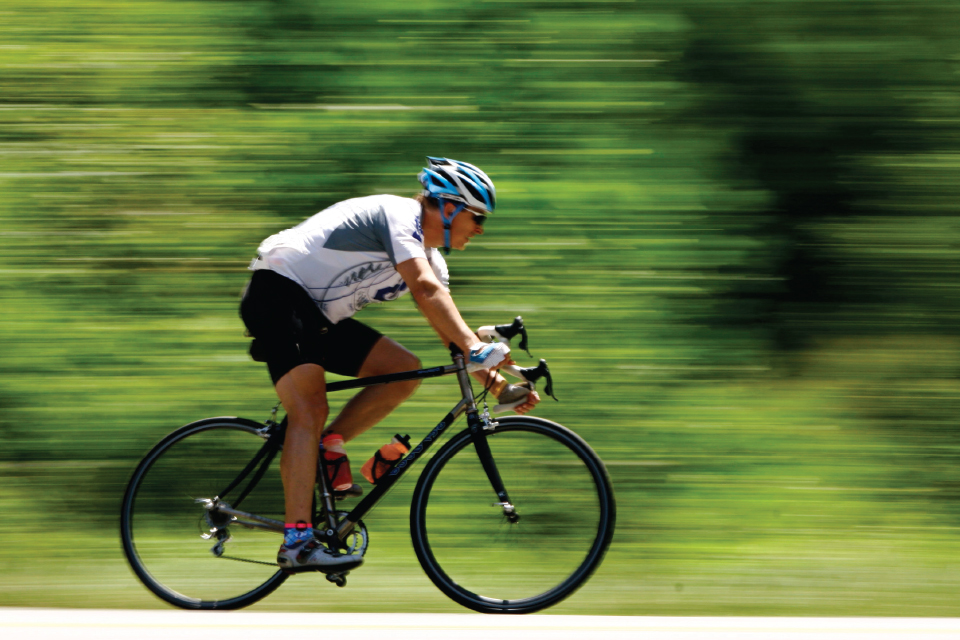It’s Just Swimming, Biking, and Running

Guess what? You can do a triathlon.
Triathlons aren’t the gruel-fests they used to be. Make no mistake, there are plenty of tough triathlons out there, but the majority of races are geared toward first-time athletes. This is great news for the budding triathlete. Events such as the Texas Tri Series are great ways to start small, with The Rookie Tri, and, over the course of a season, end big with the Kerrville Triathlon.
Only three rudimentary skills are needed to complete a triathlon: swimming, biking, and running. However, the most difficult skill for a new triathlete to master is patience. Modern society teaches us to expect results immediately; many things these days can be accomplished with the click of a button. Thankfully, success in endurance sports is not immediate. I use the word thankfully because it’s nice to put time, effort, sweat, and sacrifice toward a goal. I may sound old school, but I believe that the reward is much sweeter if the effort required challenges us.
Back to my argument as to why anyone with the proper training can complete a triathlon—you only need proficiency at three skills, and likely you already have experience with all three.
Let’s start with the swim. Many learned to swim as an infant or toddler. Your first underwater experience may have occurred when your parents blew in your face to stimulate the dive reflex and then dunked you underwater. You naturally held your breath and kept your eyes open. Little did you know this would be good practice for your first open water swim start. We all hear how nerve-racking the swim portion of a triathlon can be; there are lots of bodies nearby, you are trying to move through an unnatural medium, and it’s difficult to rest during this leg of a triathlon. However, all of these difficulties can be overcome with patience, practice, and coaching. Take the swimming skills that you currently have (maybe that only includes your ancient dive reflex) and find a swim coach who emphasizes technique and skill-based swim training. Proper swim technique is essential to move through the water quickly and confidently. Remember, swimming well is a result of 70 percent good technique and 30 percent aerobic fitness. Spend your time learning perfect swim form and finish your swim leg efficiently and confidently.
“It’s as easy as riding a bike.” How many times have we all heard this? Even if you haven’t ridden a bike since your training wheel days, not much has changed. Sure, the new bikes look fancy with all kinds of new technology, but they function the same way as your old Schwinn Stingray. Get out your dusty bike, tune it up, and begin to ride consistently. Or head down to your local triathlon shop and buy an entry level-racing bike. Your money goes so much further these days for a nice race bike. If you need training advice and additional riding skills, talk to the shop employees, or hook up with a local training group or personal coach. Cycling is not a difficult skill in which to gain proficiency. All you need is a dedicated athlete and the right coach.
We can all run. Seriously, we can. Our body and knees are designed to accept the forces of running, and don’t let anyone tell you differently. What we are not designed to do is sit in a chair, which, unfortunately, is how most of us spend the vast majority of our time. The act of sitting, a modern phenomenon, works against our ability to run effectively by tightening hip flexors and weakening hamstrings and abdominal muscles. The first step to becoming a runner is to sit less. This is easily accomplished by using a stand-up desk at work or taking scheduled standing/walking breaks during the workday. The next step is to employ a run/walk routine. For example, this technique might consist of five minutes of running followed by two minutes of walking and repeating the sequence four times. As your fitness improves, the run interval will become longer and the walk interval will become shorter until you are running continuously for 30 minutes. A mistake many beginning endurance athletes make is trying to run (or bike, or swim) too fast, which leads to running less frequently. Think of the following mantra to avoid this common pitfall:
Run slower than you think you should.
Run farther than you think you should.
Run more frequently than you think you should.
Analyzing these three sports separately allows the triathlon to be seen as an achievable event. It is the act of combining swimming, biking, and running into one event that allows for the deep sense of accomplishment. This is what makes the triathlon unique and special. Although the sports are easy to perform, triathlon requires a different training approach and more dedication from the athlete than any one single sport.
As a triathlon coach, I find that athletes are most often proficient at two of the three sports; the third sport is what keeps them from becoming a triathlete. Don’t let this be a reason to not to train for your first sprint-distance race. Even most professional triathletes have a weak sport. If we all thought this way, there would be no triathletes.
The invention of the sprint distance race was developed to introduce more participants to the sport. So, introduce yourself to the idea of completing a 500-meter swim/12-mile bike/ three-mile run race. This is achievable for all athletes who put forth the time and planning. After all, it’s just swimming, biking, and running.






